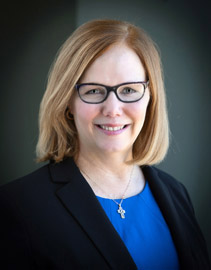The following article is a reprint of The Boston Pilot’s article, Improving Instruction and Increasing Learning by Kathy Mears.
Principals and teachers in the Archdiocese of Boston are working together to determine what good teaching is and they are working together to make sure that every teacher is utilizing the strategies necessary to ensure learning.
 In 1936, a 19 year old woman began teaching in a one-room schoolhouse. She had 34 students in grades 1-8. In those days, students in the seventh and eighth grades were all required to take an end of the year exam. A person from the state department of education went to each schoolhouse in the state and administered the test and graded it.
In 1936, a 19 year old woman began teaching in a one-room schoolhouse. She had 34 students in grades 1-8. In those days, students in the seventh and eighth grades were all required to take an end of the year exam. A person from the state department of education went to each schoolhouse in the state and administered the test and graded it.
No one was expecting great results, as the students had been under the direction of a very young, first-year teacher. The previous year, none of the students had passed the exam. This year, all of the students passed the test. Her students, as measured by the exam given to all students in the state, had not only passed, they had outperformed most other students. For her work, the teacher was given a raise. Her salary went from $85 a month to $100 a month. A large raise for a job well done!
Determining how effective a teacher is can be difficult. If we ask 50 people to watch a teacher teach, we will receive a variety of opinions as to his or her effectiveness. Although everyone has an idea of what great teaching is, research shows that people’s perceptions of teacher effectiveness vary significantly.
Principals and teachers in the Archdiocese of Boston are working together to determine what good teaching is and they are working together to make sure that every teacher is utilizing the strategies necessary to ensure learning. Catholic school teachers and principals are watching each other teach, and they are watching exemplary teachers through digital media resources. They are discussing what great instruction looks like and they are working together to improve instructional practices. They are also considering the different ways to measure teacher effectiveness. It is challenging work, but work that we believe will improve the teaching and learning processes.
To assist us in developing best practices in this area, we have formed a pilot group of schools who are using an online tool to help us with this work. Teachers, department chairs, instructional coaches and/or peer coaches are learning to use this tool and a comprehensive rubric to help facilitate discussion of best practices. Reading the rubric together, watching teachers while utilizing the rubric, and then discussing what they saw, means the beginning of a common language that will help us to continue to professionalize our practices.
The way we establish compensation for our teachers and principals is also being studied in the archdiocese. Salary scales provide consistency, but they do not reward teachers who are doing exemplary work, and they generally provide larger raises for those teachers who have been teaching the longest, regardless of student performance. Paying teachers based on their performance and the performance of their students is not a new idea, as you can see from my story from 1936. Yet, it is one that requires much work on the part of administrators and teachers, if it is to be a just model. This is work that takes a lot of time and patience, but many of our schools are reflecting on these things.
My aunt was that young teacher who received a performance-based raise. She went on to teach for over 40 years in both public and Catholic schools. Our teachers make significant sacrifices to teach our students. It is important that as a Church we do all that we can to support our teachers and to provide the best compensation that we can.
Through these processes, we want to improve our instruction and increase learning. We cannot forget, however, that as Catholic educators we have one primary goal: To bring our students to Christ. We cannot truly measure our effectiveness in this area, yet it is the most important thing we do in our schools, and it can never be forgotten. We can, however, make sure that our teachers are well prepared to share our faith by taking the time to assist them in their own faith journeys, by providing opportunities for teachers to keep learning about our faith and by supporting them in their efforts to teach our children. When we work together to assist our children in learning how to be faith-filled individuals, eager to know, love and serve God, we will achieve our goal. Thankfully, the Archdiocese of Boston has many excellent teachers who are teaching the faith and working each day to help our students to become saints and scholars!
Kathy Mears is Superintendent of Catholic Schools in the Archdiocese of Boston.